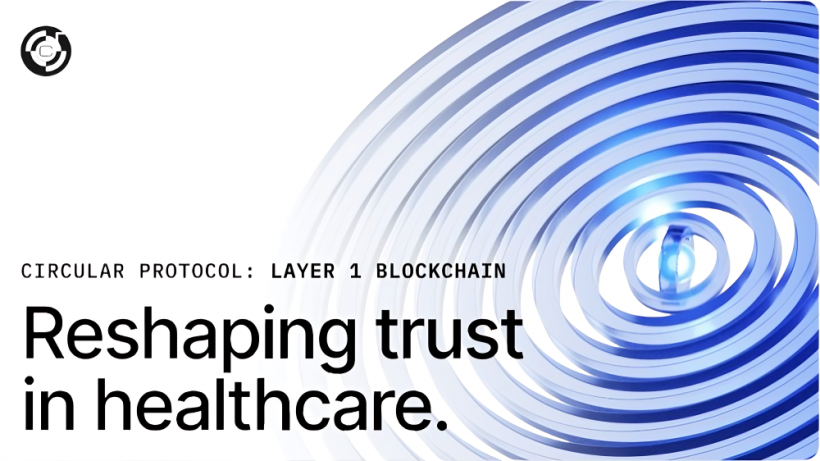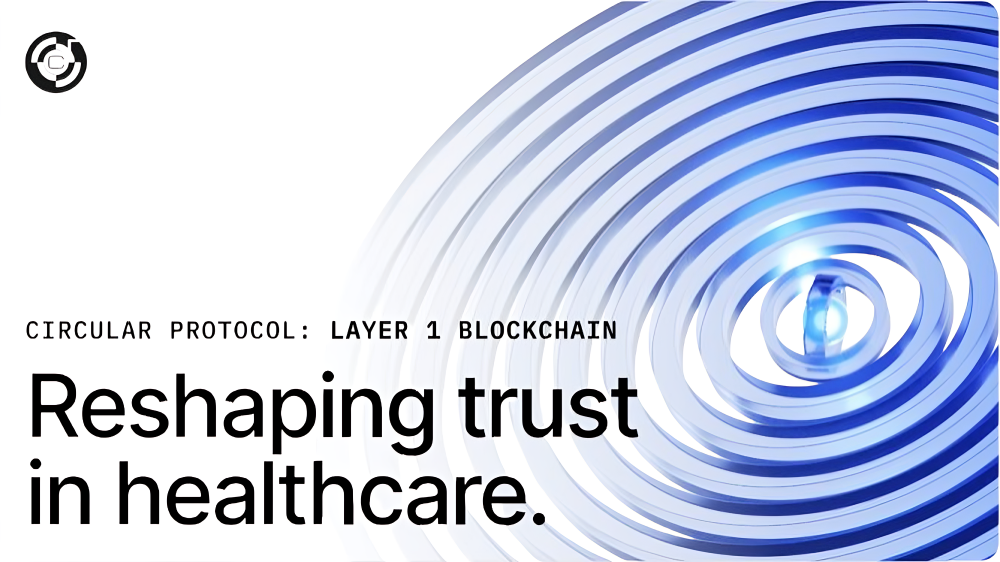Layer 1 blockchains (the foundational networks on which secondary blockchains are built) have seen a recent surge in adoption. However, this has not translated into solving existing problems, as there is a shortage of networks suitable for high-stakes applications, partly due to the lack of capacity to meet stringent requirements such as HIPAA and GDPR.
These problems, among others, make a high-quality blockchain solution necessary. This is how the Circular Protocol project was born.

A 4th generation blockchain solution at level 1
Circular is a 4th generation, layer 1 blockchain that is fully compliant with healthcare and medical regulations while being easily scalable. This project is not only aimed at the DeSci and healthcare sector, but its underlying architecture also makes it ideal for adoption in the DeFi, GameFi, finance, journalism, and election sectors.
This project aims to propose a blockchain that addresses recurring problems, provides sustainable solutions and offers an ecosystem to build scalable, secure and decentralized applications. To achieve this, the Circular team introduces advanced components that make the Layer 1 network a unique project of its kind.
Technology framework
Circular’s architecture supports both private and public blockchains and ensures HIPAA and GDPR compliance for the healthcare industry, which is unique. Other key technology components include the Peer-2-Peer Discovery Service (P2PDS), which facilitates node registration and provision of peer lists within the ecosystem. It allows nodes to register on the network and, as they (nodes) regularly download network updates from their peers, P2PDS ensures that new nodes are discoverable and subsequently onboarded. It helps maintain Circular’s scalability and connectivity.
Another notable element of Circular is the Proof of Reputation (PoR) consensus algorithm. While both PoW and PoS mechanisms have been used by various networks over the years, they have both been plagued by scalability/centralization and cost issues, respectively. PoR, on the other hand, is an efficient and simple algorithm for transparently achieving consensus on a blockchain. It mimics human behavior in the consensus-building process and, unlike PoS, penalizes bad behavior by using future gains as a deterrent.
PoR introduces a reputation index in which a reputable node earns the largest share of transaction fees, while the one that is not so reputable earns little. Nodes can improve their reputation by continually being at the top and agreeing with the majority. On the other hand, they lose reputation points if they disagree with the majority and each disagreement results in a decrease in the rating. Furthermore, in the PoR system, when nodes create a new block, they broadcast it to the entire network. All other nodes must verify various aspects of the block. Once this is done, it is signed with a statement of acceptance or rejection and sent back to the block creator. The creator then gathers the responses to determine whether the block is accepted or rejected by the majority. This is how Circular’s PoR consensus algorithm ensures efficiency and effectiveness within the ecosystem.
Automatic progressive sharing
Circular ranks nodes based on their performance, determined by their processing power and connectivity speed. These nodes are categorized into subnets, with subnet 1 containing the worst performing nodes and vice versa. The 4th generation Layer 1 solution is committed to delivering a blazing fast ecosystem, and Auto Progressive Sharding helps make that happen.
This system ensures that the network performance is not slowed down by the slowest node. How? Lower-ranking subnets are assigned fewer tasks. Higher-ranking subnets, on the other hand, are given visibility across all networks, allowing them to process transactions faster and more efficiently. The introduction of this feature allows for maximum efficiency while providing nodes with adequate resources to continue validating blocks quickly. Automatic progressive sharding allows Circular to meet and exceed any set transaction throughput. However, it is not solely responsible for performing this task; the Network Access Gateway (NAG) routes new blocks by generating a subnet index and distributes transactions to the different subnets accordingly.
NAGs, combined with Auto Progressive Sharding, ensure that all transactions on the network are processed quickly without compromising the high level of security and reliability.
Circular knots
Circular’s node framework is both simple and efficient, with each node performing all the necessary validation functions. The Web Server (WS) allows nodes to interact with each other based on the TCP/IP protocol. Communication between nodes is signed to enable identification and is managed by the Transaction Manager, which is responsible for parsing and redirecting transactions to the correct blockchain. The Circular team also introduces the Hyper Code (HC) virtual machine that allows smart contracts to be executed in two modes: Interpreter and Compiled.
Circular incorporates consumer hardware compatibility that allows nodes to run on consumer hardware and seamlessly mine blockchains simultaneously. This is intended to incentivize nodes to process more transactions, generating plenty of revenue for node owners across the network. Circular is environmentally friendly, leaving a minimal energy footprint in part because each action on the ecosystem serves one or two specific purposes. Running multiple blockchains simultaneously dissipates inefficiencies and introduces a slightly higher level of flexibility into the project. This allows it to undertake and complete a range of tasks that other Layer 1 networks can barely attempt.
Circular aims to become a fully open-source blockchain network with all the necessary software components to be released soon. The layer-1 blockchain solution uses the C++ programming language as it provides better control over hardware and memory and provides a scalable network where high-value transactions can be processed effortlessly. Circular’s integration is simple and capable of revolutionizing today’s healthcare, journalism, elections, and finance industries.
Conclusions
Circular’s blockchain is interoperable: it allows users to easily transact across multiple networks. By leveraging smart contracts, these new components, and partnerships with other layer-1 platforms, Circular specifically supports DeSci and health applicationswhich require an additional layer of regulatory compliance, thus passing the throughput and security test at scale.
For more information:
Circular is a 4th generation blockchain designed to address the typical limitations of previous generation chains. Circular’s strength is DeSci: developers and enterprises are finally able to scale research, innovation and market execution across all areas of applied health, pharma and science in a journey towards transparency, data security and democratization of data access and ownership. Circular Protocol provides tamper-proof data auditing with decentralized blockchains and zero-knowledge proofs, ensuring compliance and protecting patient data while certifying processes and content. Privacy and decentralization, maximum throughput and scalability, interoperability and proof of reputation: all this is achievable through a proprietary parallelized and multi-chain architecture combined with revolutionary tools and applications.
Circular has offices in Boston and Lugano. Dr. Gianluca De Novi, its CEO and co-founder, is a high-performance computing expert with a strong background in real-time 3D graphics, physical simulation, robotics, and blockchain technology. He holds a master’s degree in electronics and computer science and a PhD in robotics from the University of Bologna. He currently directs the Medical Devices and Simulation Laboratory at Massachusetts General Hospital and has been a faculty member at Harvard Medical School and Harvard Extension School since 2011. His work includes research funded by the U.S. Department of Defense in the medical technology sector.
ⓒ 2024 TECHTIMES.com All rights reserved. Do not reproduce without permission.
*This is an article written by an independent person and its contents do not necessarily represent the views of techtimes.com




